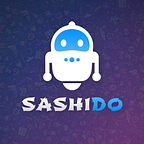Dangers and benefits of the freemium model — What did we learn out of Parse’s shutdown?
Freemium business model is very popular, especially among start-ups. The main idea is to give users cool free service and a premium version of it with more features included. That’s a great marketing approach because naturally people like free things(cool service for free yeaah :) ), so soon they are hooked up and the service can grow pretty fast.
There are some classic examples of great and successful freemium project such as Spotify, which was launched in September 2008 and 8 year later, in June 2015, had more than 75 million active users and this March announced 30 million paid users, an impressive number considering the huge free service part.
Of course this is the positive lesson- it’s not a perfect business plan, because there’s a risk out there: first you must have a really large number of users (we’re talking about millions) in order for the company to be successful — only 1–2 % percent of the free users turn into paid ones. So the model is effective for services who could gain potentially a large number of auditory and not for those, whose range of products is limited in scope.
In addition, there’s another crucial and tricky moment: you should be very careful with the decision which features to be paid and which not, cause if you don’t give enough cool free things you won’t gain users. But if you do — there will be no interest to pay for the premium version of the service.
Why Parse’s freemium model didn’t work out
Parse offered a lot for free and this is probably the main financial discrepancy. Parse Core included 30 api requests per second, 20GB of file storage, 20GB of database storage, 2TB of file transfer, 1 million unique recipients/month, advanced push targeting, push scheduling and multiple push certificates available to everyone for free (including advanced analytics) which is quite enough for a regular mobile app to be working just fine. Parse is reportedly supporting around 500 000 apps that makes about 5000 potentially paying users, which is not enough.
Parse contributed a lot to make MBaaS so popular, developers found it convenient and easy to focus on the building of the actual app, saving a lot of time and efforts. After Parse’s announcement to shut down, developers began to doubt the back-end industry and worried that the scenario may repeat again with the next provider. This is the main flaw of the freemium model: not profitable enough, there’s no point to keep up with it. So, it’s not trustworthy as a service. That’s fine if we talk about enjoyable programs like Runastic, which we use in our personal life, but if your business depends on the service — that’s a problem.
Parse is not the first popular company to experience the bad side of the freemium: Punch Quest, the excellent iOS endless runner/beat-em-up crossover, have abandoned its free-to-play business model and decided to sell the game for $0.99 on the App Store. Rocketcat Games’ product gained more than 600,000 downloads in its first week since release, but failed to make much money from its in-app purchases. Players reported that there was so much free stuff in the game that there was no point for buying the full version. Rocketcat’s Kepa Auwae commented that if the studio didn’t change its business politic the studio risked “leaving mobile game development completely.”
Another example of failure of the freemium is Bidsketch — a SaaS based app for designers. There’s a quite interesting article by Ruben Gamez, the company’s founder, in which he honestly explains the struggles he felt after launching the product: while his users-base was growing, paid ones were just 1% and income was very small. He tried changing the free features but this didn’t work and at the end he had to support the huge amount of free users. The truth is: if one service is popular doesn’t automatically mean that it will be also profitable for the owner.
Free vs. Secure
It’s not fun and nice to say, especially if you’ve felt once the great experience of free awesome service, but products cost money for their creators: it takes time, resources and effort to deliver something great. And when the product doesn’t give back the investment: the danger of being abandoned is always real. Even if it doesn’t get completely shut down — it won’t be upgraded in the future and users will draw back from it naturally. Paying even a small amount of money ensures the long life of the service and the investments for its better quality and performance, which is especially valuable in the software technologies.
There’s examples for paid services, which make the same growth as the freemium model: such as DigitalOcean, which in December 2015 was announced as the second largest hosting company in the world in terms of web-facing computers and raised $ 123.21 million in funding. Their success was largely due to the flexible easy-to-understand paying model and their low-costed servers make a lot of sales.
So you don’t have to offer expensive service in order to have profitable and successful business. You just have to bring the best, not to charge more than what you deliver, but to know the price of your service in order to keep the quality.
Marian Ignev (@mignev)
CEO of SashiDo
Hacker Noon is how hackers start their afternoons. We’re a part of the @AMI family. We are now accepting submissions and happy to discuss advertising & sponsorship opportunities.
If you enjoyed this story, we recommend reading our latest tech stories and trending tech stories. Until next time, don’t take the realities of the world for granted!
